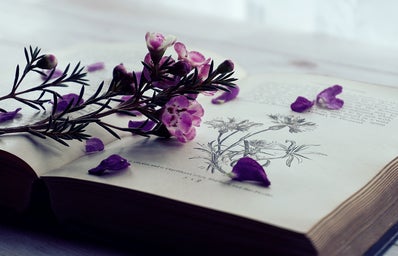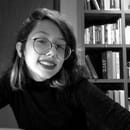“I write entirely to find out what I’m thinking, what I’m looking at, what I see, and what it means. What I want and what I fear.”
Joan Didion
Joan Didion was truly a writer. She woke up every morning, had a can of Coke, and sat by her typewriter to do what she did best, write stories, may they be fiction, journalism, or personal essays. She lived her life as an active observer, sitting right in the middle of some of the most important events of the 1960s and 1970s United States History. Likewise, she lived right by the house where Sharon Tate was murdered, held parties with Janis Joplin, and watched Jim Morrison as he wrote some of the most notorious songs of rock n’ roll. She did what we all, as journalists, aim to do: she wrote the history of her times.
Didion was born in December 1934 in Sacramento, California. “Don’t you think people are shaped by the landscape they grow up in? She [California] shaped everything I think, do, and am.” Living in California was truly what made Joan Didion such a unique journalist. She described the hills in which she learned how to drive, the campus that held student riots while she tried to study, and the houses that, like hers, faced the beaches of Malibu and Los Angeles.
From five years of age, Joan Didion wrote down her deepest thoughts, maybe trying to understand them, maybe simply trying to get by with such an intense mind and personality. She tells in the documentary “Joan Didion: The Center Will Not Hold” (2017) that her first journal was given to her at that age to “stop whining and entertain herself”. In that very journal, she wrote the story of a woman who, lost in the Arctic, gasping for her life, suddenly tripped and fell by the Sahara Desert, where she would die before lunch.
From the beginning, one could tell the genius in Didion, her ability to write about any and everything, and that’s what she would do from then on. In 1968, she wrote a book of essays called “Slouching Towards Bethlehem”, a compilation of very personal pieces about her life experience in California. Between them, one essay about the personal importance of keeping a notebook, something that has clearly played a big role in the author’s life.
Then, in 1979, she published what might be her most famous work, “The White Album”, another collection of essays, this time mainly about the 1960s. The book takes its title from its main essay, which is a reference to The Beatles’ album of the same name. One of the main events represented in the book is the Tate–LaBianca murders, perpetrated by members of the Manson Family in August 1969, an event which Didion describes as the ending point of the 1960s. In the murder site, assassins wrote in blood “Helter Skelter”, a song by The Beatles featured in “The White Album”.
Those essays were mainly published in magazines and newspapers of the time, from Vogue to The Saturday Evening Post. Aside from her work as a journalist and essayist, she wrote fiction and movie scripts, such as the semi-autobiographical book “Play It As It Lays” (1970) and the film “The Panic in Needle Park” (1971), starring Al Pacino.
Catching the eye of The New York Review of Books’ editors, she then started to work as a correspondent for internal and external politics for the magazine. During that time, she wrote pieces on El Salvador — to which she traveled amidst a war —, the Reagan Government, Vice-President Dick Cheney, the war in Iraq, and the notorious Central Park Jogger Case.
In the early 2000s, though, her daughter, Quintana, and her husband, John Gregory Dunne, got sick and died within a very short period of time. Being left alone at the age of 70 by both of the closest people to her was obviously a great struggle in the author’s life, so she did that which she’d done her whole life to confront said pain: she wrote.
She released in 2005 “My Year of Magical Thinking”, and in 2011 “Blue Nights”. In both books, Didion reflects on grief and loss as she tries to process and understand what had just happened in her own life. In a deeply personal and almost haunting analysis, she manages to talk about those matters in a way very rarely done before her: she writes about grief and being left alone in the nothingness of the world with a distance, as the journalist she was always above all.
Joan Didion is oftentimes forgotten when we talk about New Journalism or literary journalism, but I’d say she is the one author you should be reading. Her fluid writing truly has the power to get you engaged in whatever it is she’s writing about, may it be the water systems of California or a day at the studio with The Doors. She lived her life as a reporter, always watching and typing, but there was something special about Joan Didion’s writing until her death, last December, she wrote the truth of her life and the world around her, she wrote in order to live.
————————-
The article above was written by Carolina Azevedo and edited by Marina Ponchio. Liked this type of content? Check out Her Campus Casper Libero for more!


